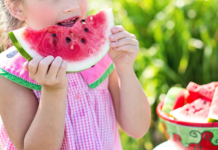We’ve all seen a filthy benchtop, and it ain’t pretty. Whether it’s gunk and scum soaked into the bathroom vanity or old food scraps stuck to the kitchen cooking space, the last thing you want is for these filthy infiltrators to keep on living and keep on loving your benchtops.
Why? Because your benchtops are a cesspool, a home-situated petri dish, for bacteria, dirt, grime and other filthy debris, meaning they should be dealt with to avoid any nastiness down the track.
But simply spraying and wiping doesn’t exactly get the job done, as different benchtops can benefit from more stylised approaches, not to mention if you buy Clinell wipes Australia and its supermarkets have in stock!
With this in mind, here is how to properly clean your benchtops so that they don’t end up making you and the family sick after one too many exposures to something grotty:
- How to clean timber benchtops
Wooden counters are stunning – we all know this – but they can also be a real nuisance to clean. Basic spills should be immediately cleaned to avoid staining. Use a detergent surface spray or warm soapy water to ensure these spills (even that of water!) don’t stain the surface.
Avoid using any acid-based detergents or cleaning products, as the acid will rip through the glue that keeps your benchtop connected. The best maintenance for wooden benchtops is regular oiling and an annual reseal is recommended to avoid a bacteria buildup that could wreak havoc on your kitchen’s hygiene!
- How to clean marble benchtops
Marble is an incredibly popular choice for kitchen benchtops due to its unrivalled sophistication and its variety of styles and shades. However, marble is another high maintenance material that is susceptible to staining and scratching.
To keep your marble benchtop looking like something out of a Roman emperor’s palace, give it a regular clean with a damp microfiber cloth and warm water. Use a benchtop cleaner labelled “safe for marble” to clean any spills or marks before rinsing with clean water.
If there are any spills, be sure to wipe it up immediately, especially with fruit juice or alcohol as acidic products can leave a nasty stain. Finally – but as if you didn’t already know – be sure to prepare any food on chopping boards as cutting up food on marble will leave it looking absolutely abysmal!
- How to clean laminate benchtops
Laminate benchtops, god love ‘em, are the cheapest and easiest to clean (and maybe the most unsightly too, but hey, they’re convenient!). All you have to do is use a general household cleaning spray or soapy water to remove any grease, spills or dirt, and then use a clean cloth to remove any further water. Avoid abrasives and scourers as they will damage the surface. And, of course, you can always buy Clinell wipes Australia has available to further disinfect the surface.
- Cleaning stainless steel benchtops
Stainless steel benchtops are renowned for their durable and non-porous surface, as well as being easy to clean and disinfect. However, you don’t want to cut food directly on the surface as it will most certainly cut it up in a way that really shouldn’t have happened.
For cleaning, simply use detergent, a dishcloth and warm water. If you would like to give it a serious clean, use vinegar and a sprinkle of baking soda before giving the benchtop a good old scrubbing with a microfiber cloth or paper towel!


























